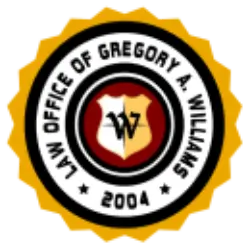
Under Washington State canons of statutory construction, what is the Campbell & Gwinn Framework? Here’s my point of view.
(IMPORTANT: This article is for informational purposes only and is based upon my point of view. Due to the rapidly changing nature of the law, we make no warranty or guarantee concerning the accuracy or reliability of the content in this article. No content on this site, regardless of date, should ever be used as a substitute for direct legal advice from your attorney. Please review our Disclaimer | Terms of Use | Privacy Policy before proceeding.)
CANONS OF CONSTRUCTION: THE CAMPBELL & GWINN FRAMEWORK
A canon of construction is “[a] rule used in construing legal instruments, esp. contracts and statutes.” Black’s Law Dictionary 219 (8th ed. 2004) (emphasis added).
NOTE: “A frequent criticism of the canons [of construction], made forcefully by Professor Llewellyn many years ago, is that for every canon one might bring to bear on a point there is an equal and opposite canon. This is an exaggeration; but what is true is that there is a canon to support every possible result.” Id. (citing Richard A. Posner, The Federal Courts: Crisis and Reform 276 (1985)) (internal quotation marks omitted).
Ambiguous Statutes (WA State)
Washington State courts use the Campbell & Gwinn Framework to inquire whether a statute is ambiguous. See Magney v. Pham, 195 Wash.2d 795, 803, 805, 466 P.3d 1077 (Wash. 2020).
The Campbell & Gwinn Framework
Courts apply the Campbell & Gwinn Framework as follows:
(1) DETERMINE the legislative intent OF the STATUTE
When a Washington State court construes “a statute, … [its] goal is to determine and effectuate legislative intent.” Magney, 195 Wash.2d at 803, 466 P.3d 1077 (citing Swinomish Indian Tribal Cmty. v. Dep’t of Ecology, 178 Wash.2d 571, 581, 311 P.3d 6 (2013); Dep’t of Ecology v. Campbell & Gwinn, L.L.C., 146 Wash.2d 1, 9-10, 43 P.3d 4 (2002)) (internal citations omitted) (emphasis added).
(2) EVALUATE the plain and unambiguous language OF the STATUTE
The court will “start with the plain and unambiguous language of a statute.” Id. (citing Campbell & Gwinn, 146 Wash.2d at 9-10, 43 P.3d 4).
(3) if the statute’s meaning is plain on its face, then the court must give effect to that plain meaning
“[I]f the statute’s meaning is plain on its face, then the court must give effect to that plain meaning as an expression of legislative intent.” Id. (citing Campbell & Gwinn, 146 Wash.2d at 9-10, 43 P.3d 4) (alteration in original). “[T]he plain meaning is … derived from what the Legislature has said in its enactments, but that meaning is discerned from all that the Legislature has said in the statute and related statutes which disclose legislative intent about the provision in question.” Id (citing Campbell & Gwinn, 146 Wash.2d at 11, 43 P.3d 4) (alteration in original).
(4) if the statute is ambiguous, then it is appropriate for the court to resort to aids to construction
“[I]f, after this inquiry, the statute remains susceptible to more than one reasonable meaning, the statute is ambiguous and it is appropriate to resort to aids to construction, including legislative history.” Id. (citing Campbell & Gwinn, 146 Wash.2d at 12, 43 P.3d 4) (alteration in original).
Conclusion
Washington State courts use Campbell & Gwinn Framework to inquire whether a statute is ambiguous. If the interpretation of the statute is clear at first glance, the court is obligated to uphold that straightforward interpretation as reflective of the legislature’s intent. Alternatively, if the statute is determined to be ambiguous–meaning, “susceptible to more than one reasonable meaning”–then it is appropriate for the court to resort to aids to construction, including legislative history. See id.
LEARN MORE
If you would like to learn more, then consider contacting an experienced attorney to discuss your case. This article is not offered as legal advice and will not establish an attorney-client relationship with Law Office of Gregory A. Williams or the author of this article; please refer to our Disclaimer | Terms of Use | Privacy Policy for more information.


